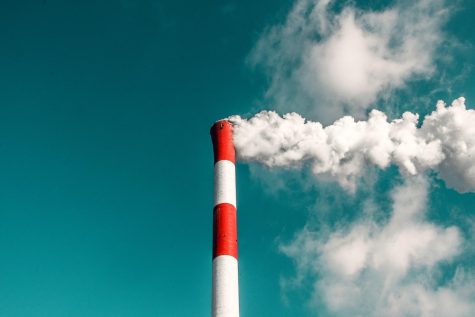How Companies are Striving for Sustainable Solutions

photo of the Eucalyptus trees taken at the border of the Khao Yai National park in Thailand. A sign near the trees mentioned “Double A paper”. Last year there were my advertisements on television with the slogan ” Double A paper, double quality paper”. I didn’t know it was a Thai company.
Companies: Striving for Sustainable Solutions
By Adam Barber
s the threat of climate change becomes harder to ignore both politically and socially, companies of various industries are taking stands for sustainability. But what goals, such as net-zero emissions, are genuinely promised and which are facades to draw in consumer attention?
The NewClimate Institute, an organization of climate experts and educators for climate change activism and research, recently looked into this question. The National Public Radio (NPR), published the article, “Corporate Climate Pledges are Weaker than they Seem, a New Study Reports,”
on February 7, 2022. It highlights this discussion, stating that the “NewClimate Institute concluded that even though many companies have pledged to reach net-zero emissions, the 25 companies they studied have collectively committed to reduce emissions by about 40% — not the 100% that people might be led to believe from the companies’ net-zero or carbon-neutral pledges.”
As climate change awareness increases in areas such as social media, companies race to keep up. Much of these promises to reduce carbon emissions are fueled by climate activism, which is a good incentive, but only if the solutions are implemented to an effective extent.
Reducing emissions to 40% rather than 100% is likely done to protect company profit while still appealing to eco-oriented consumers. Although, pressures from popular media are demonstrated in the existence of these goals, such as fast fashion clothing companies, like H&M, leaning toward recycled materials.
On the consumer level, certain buying practices will supplement efforts done by companies, but will not have as great of an impact. Agricultural and cosmetic industries largely contribute to deforestation, such as with vast palm oil plantations replacing tropical forests rich with biodiversity.
Companies are promising that efforts are being made, through programs like carbon offsets, which “often rely on carbon removal ventures such as reforestation projects. These projects suck up carbon but are not ideal solutions because forests can be razed or destroyed by wildfires, re-releasing carbon into the air,” said NPR. This practice is also not ideal because the restoration occurs in a region separate from where the carbon emissions are being produced, according to the Carbon Offset Guide website.
Forests are particularly important natural habitats that should be preserved because they, especially tropical rainforests like the Amazon, are massive carbon sinks. This means they draw carbon dioxide pollution from the air and into the forest ecosystem to be used by plants, and oxygen is in turn released, helping air and water purification.
There is much dispute in areas like the Amazon about whether the environment should be favored over development. Terrance Mccoy, in the March 17, 2022 article, “We Traveled Deep into the Amazon to Investigate Deforestation. A Grisly Discovery Awaited Us,” said that, “Stretches of the highway have been improved in recent years, making travel easier and unleashing a surge of deforestation. Many in the rainforest want the government to complete the job.”
Government regulations for environmental projects like forest restoration not only decide the fate of the natural sector, but also the developing communities surviving there. Developed countries with high consumption practices, like the US, affect how smaller communities, like in the Amazon, are forced to expand beyond non-ideal living conditions that unfortunately conflict with the thriving of the forest. If developed countries’ governments regulated the massive resource use of large companies along with providing specific foreign aid to the developing communities affected, restoration projects would be collectively beneficial. In 1832, William Forster Lloyd created the “Tragedy of the Commons” philosophy, which describes this issue of unsustainable consumption practices that lead to severely depleted resources―such as the loss of effective rainforest-sourced antibiotics―that in turn weaken the consumers themselves.
Climate change is both a crisis and a project, involving the entire network of developing human populations, within the confines of Earth. Green solutions offer economic opportunities along with reform, and many companies, from clothing to cosmetics, are hopping on the rising bandwagon of sustainability. A green leaf detailing on a water bottle is not guaranteed legitimacy for climate action, but it displays trends toward connecting product prosperity with the lives of the trees.










